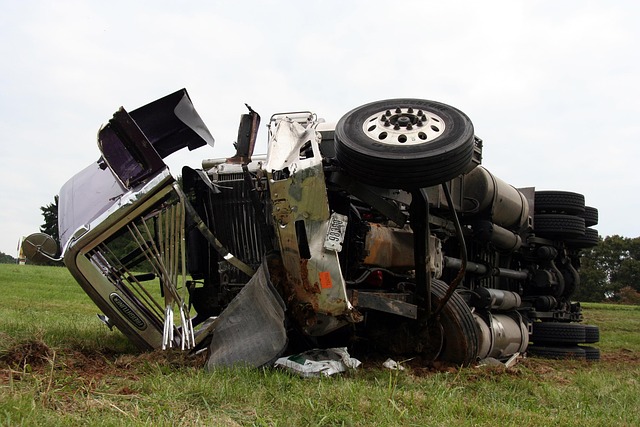Small fleet damage policies face challenges with high claim volumes and complex vehicle assessments, but technology offers solutions. Digital imaging, data analytics, and automated claim processing streamline tracking, documentation, and settlement times. Specialized software platforms powered by GPS, image recognition, and AI capture detailed damage evidence, enhance transparency, reduce administrative burdens, and support fair adjudication. Real-time monitoring of vehicle conditions, accident reports, and repair progress enables efficient management, while connected devices provide continuous data on mileage and maintenance history. Prioritizing data security, user-friendly platforms, and digital literacy maximize the benefits of these revolutionary digital solutions for small fleet damage policies.
In today’s digital era, managing physical damage claims for small fleets poses unique challenges. “Understanding Small Fleet Damage Policies and Their Challenges” explores the intricacies of these policies, highlighting the need for efficient solutions. “Technology Solutions for Efficient Damage Claim Management” delves into innovative tech that streamlines processes, while “Implementing Digital Tools for Effective Monitoring” provides practical insights on leveraging digital tools. “Benefits and Best Practices” summarizes key advantages and strategies for successful implementation, revolutionizing how small fleets handle damage claims.
Understanding Small Fleet Damage Policies and Their Challenges

Small fleet damage policies are designed to protect businesses with smaller fleets of vehicles from unexpected physical damage. These policies often cover a range of risks, including accidents, natural disasters, and vandalism. However, managing these claims can be challenging for several reasons. One major hurdle is the high volume of claims that small fleet owners may face due to the nature of their operations, leading to extensive administrative tasks and potential delays in processing.
Additionally, assessing and evaluating damage across multiple vehicles can be complex. Traditional claim management methods often rely on manual processes, which are time-consuming and prone to human error. This is further exacerbated by the need for accurate tracking and documentation of repairs, parts replacements, and costs. Implementing technology solutions, such as digital imaging, data analytics, and automated claim processing, can streamline these challenges, ensuring faster settlement times and enhanced accuracy in managing small fleet damage claims.
Technology Solutions for Efficient Damage Claim Management

Technology has significantly enhanced the way physical damage claims are managed, particularly for businesses with small fleets. Digital solutions offer efficient and streamlined processes for handling these claims, reducing manual effort and potential errors. Specialized software platforms can automate tasks such as data collection, assessment, and documentation, ensuring quick response times and accurate evaluations.
These technology solutions integrate various tools like GPS tracking, image recognition, and artificial intelligence to capture detailed evidence of damage. For small fleet damage policies, this means faster claim settlements, reduced administrative burdens, and better cost control. By leveraging technology, insurers and claimants both benefit from a more transparent, effective, and user-friendly claims management system.
Implementing Digital Tools for Effective Monitoring

Implementing digital tools has revolutionized the way small fleet damage claims are monitored and managed. Traditional methods, often relying on manual paperwork and spot checks, have been supplemented—and in many cases replaced—by advanced software solutions. These tools enable real-time tracking of vehicle conditions, accident reports, and repair progress, significantly enhancing efficiency and accuracy.
Through the integration of digital platforms, insurance providers can access centralized databases where every aspect of a claim is documented digitally. This streamlines the claims process, reduces administrative burdens, and allows for more objective assessments. Additionally, utilizing sensors and connected devices in vehicles offers continuous data on mileage, maintenance history, and driving behavior, providing valuable insights that support fair adjudication of small fleet damage policies.
Benefits and Best Practices for Streamlining the Process

Implementing technology to monitor and manage physical damage claims offers several benefits, especially for businesses with small fleets managing extensive damage policies. Digital solutions streamline the entire process, from initial claim submission to final settlement. Automated systems can quickly capture and analyze data from vehicles equipped with telematics devices or sensors, providing real-time insights into incident details, driver behavior, and vehicle condition. This enables faster decision-making, reduces human error, and enhances accuracy in damage assessment.
Best practices for leveraging technology in this context include ensuring data security and privacy, selecting user-friendly platforms that integrate with existing systems, and promoting digital literacy among staff to maximize the benefits. Regular updates and maintenance of software are crucial to keep up with evolving standards and requirements, especially as regulations related to small fleet damage policies continue to adapt.
The implementation of technology in managing physical damage claims offers significant advantages for small fleet operations, streamlining processes, and enhancing efficiency. By leveraging digital tools, insurers can effectively monitor and manage small fleet damage policies, reducing administrative burdens and potential fraud. This innovative approach not only benefits insurance providers but also ensures faster claim settlements for policyholders, fostering a more transparent and responsive insurance ecosystem. Embracing these technology solutions is a step towards revolutionizing the small fleet damage claims process, making it more accessible and beneficial for all stakeholders.
